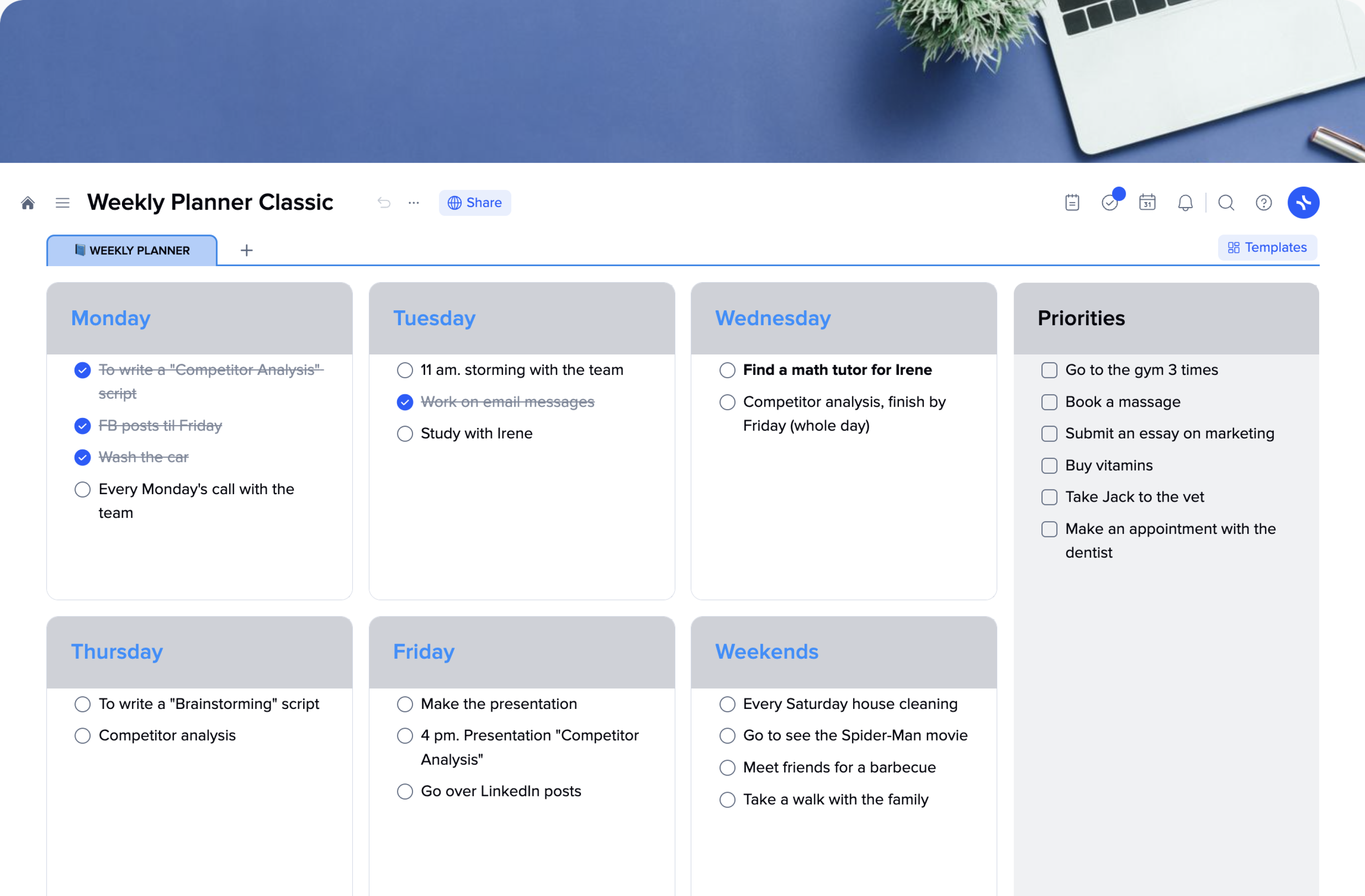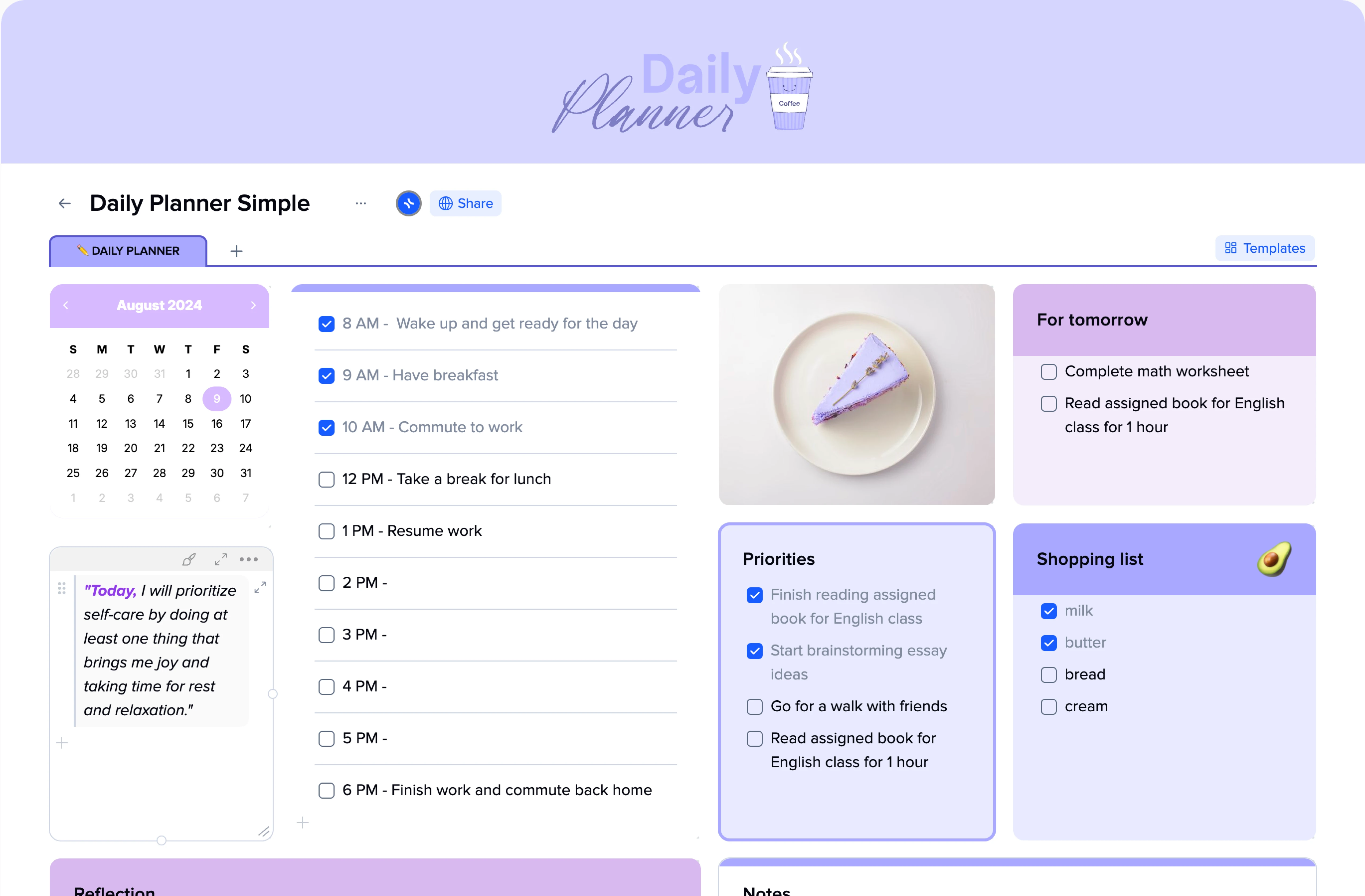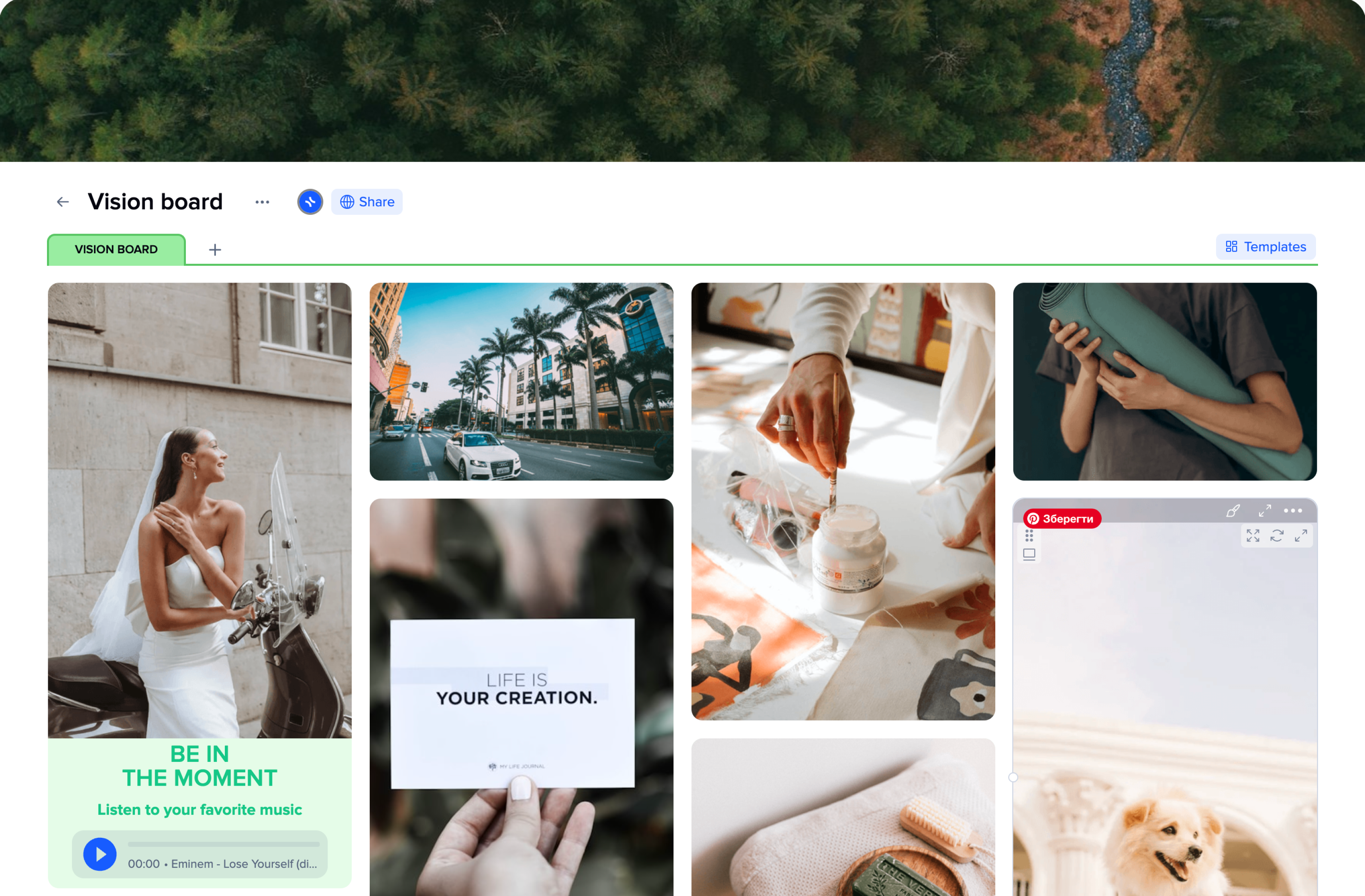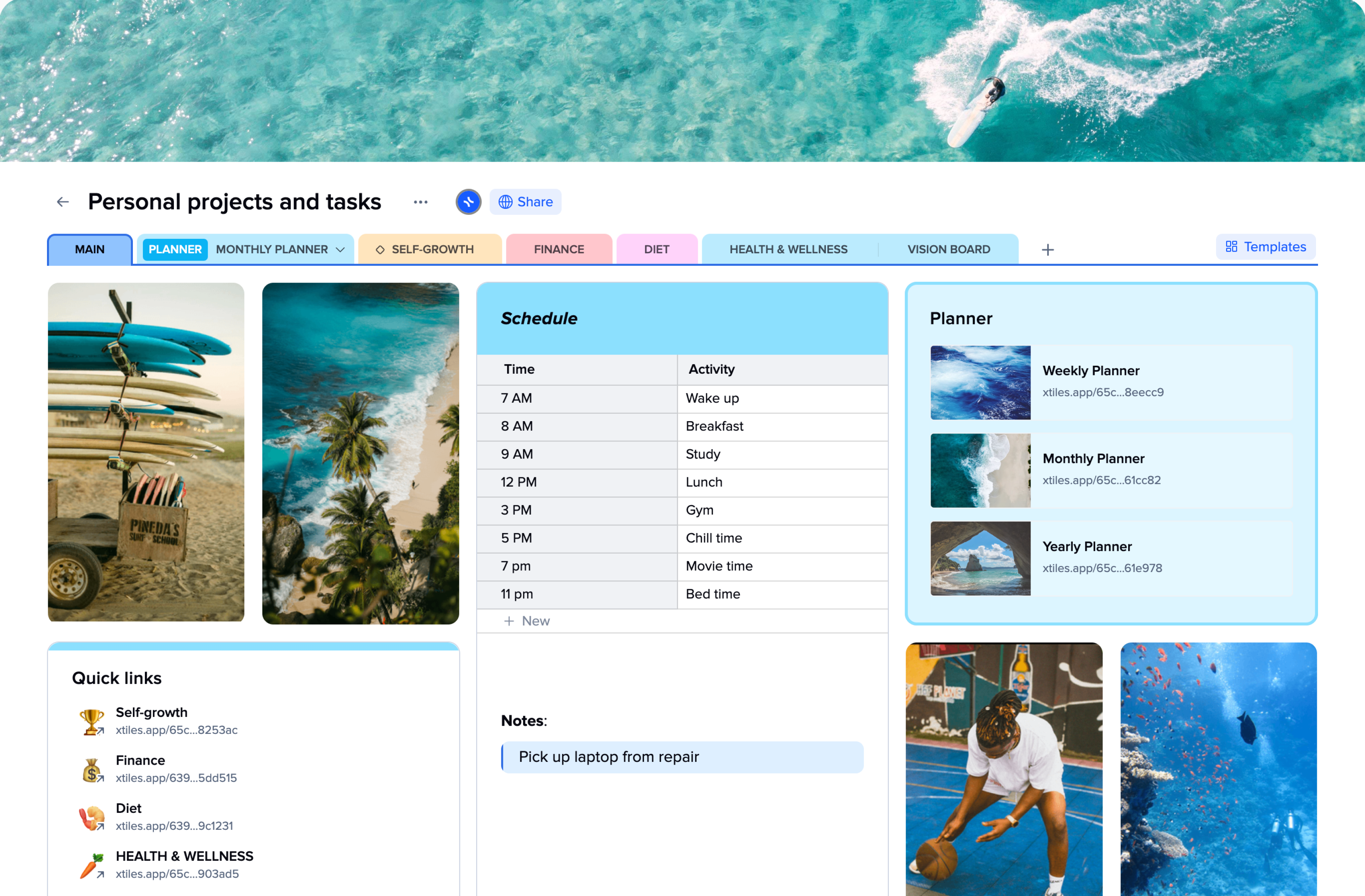Try a ready-made template from the xTiles gallery, which will help with many tasks. They can be used to jot down important things and ideas faster, bring different types of content into a cohesive look. With our templates, you can make documents look how you want them to look. And discover new, creative ways of thinking!






xTiles is a highly efficient productivity tool that offers a wide range of half-ready solutions – templates – for all your tasks and goals. Starting off on the right foot is crucial, and having a ready-to-use template can provide the push you need to not only begin powerfully but also continue and successfully finish your endeavors.
xTiles provides an extensive collection of free templates that are exceptionally beneficial for Planning, Time Management, Personal, and Business Productivity, and much more. By assisting individuals in resolving a diverse range of issues and queries, these templates serve as reliable aids in organizing tasks and routines of any kind.
When seeking ways to enhance your productivity, xTiles’ most popular templates are an ideal starting point. These templates have gained significant popularity due to their frequent usage, and there’s a good chance that the one you need is among them.
Popular templates are popular for a reason – they save time and provide efficient solutions. These templates are frequently chosen because they offer a convenient and effective way to resolve tasks and goals.
The xTiles Picks section showcases templates that embody the collective experiences of numerous xTiles users, giving you the opportunity to leverage their knowledge and insights. It’s always safer to learn from others’ experiences than to try everything on your own, especially if you are new to productivity tools, management, and planning.
Popular items gain popularity due to their relevance and quality. When a template is widely used and appreciated by many users, it means it has been effective in addressing needs and delivering desirable results.
Another reason to choose from the most popular xTiles free templates is that their popularity indicates that they have been tried and tested by others. You won’t be the pilgrim, instead, you will follow a well-known path.
While there may be multiple solutions to a given situation, not all of them may be concise or convenient for you. Imagine it’s like going hiking in a new forest without GPS, a map, or previous experience. You may go in an entirely different direction, stuck in the middle with something you have no idea how to resolve, or walk in circles until you’re tired and give up.
Popular templates are like a guide that quickly showcases your options and helps you choose the shortest and the safest way through the forest. Remember that if there’s a way to achieve your desired outcome with minimum effort and in the shortest possible time, it only makes sense to capitalize on it.
Finally, popular templates help you understand current trends, best practices, and effective approaches for effective Planning, Time Management, and Personal and Business Productivity.
To facilitate easy comprehension, each template in xTiles is accompanied by a concise description. This enables you to better understand when to utilize a particular template, even if its name or appearance doesn’t immediately convey its purpose.
Additionally, you may take a look at its demo doc to ensure it’s just what you were looking for without shortening your tiles limit. This way, you can explore the template further and ensure it meets your requirements before committing to it.
It’s undoubtedly important to consider your unique needs and preferences, yet when you start with popular templates, it gives you a solid foundation and increases the likelihood of finding a solution that aligns with your requirements.
BY USE CASE